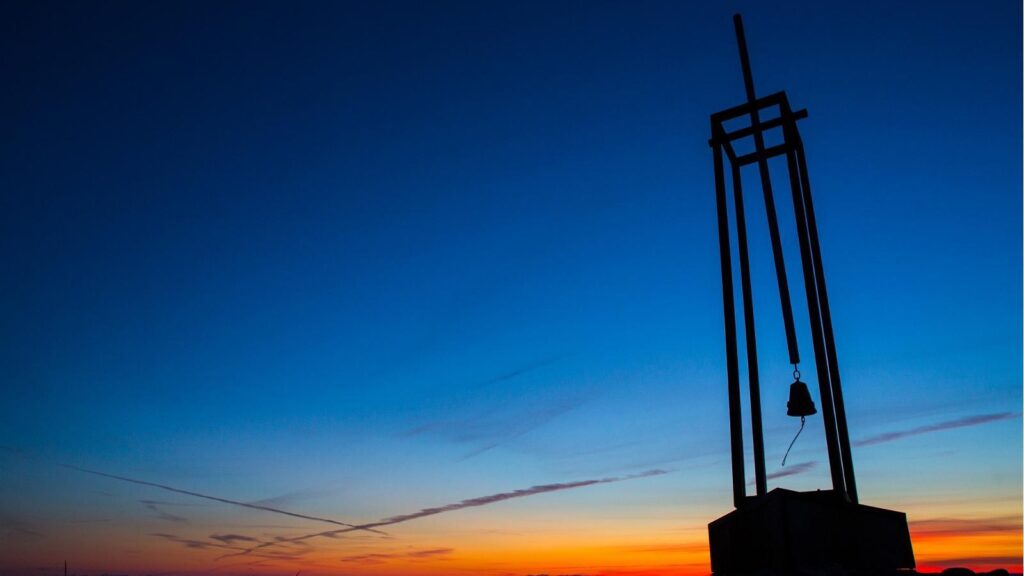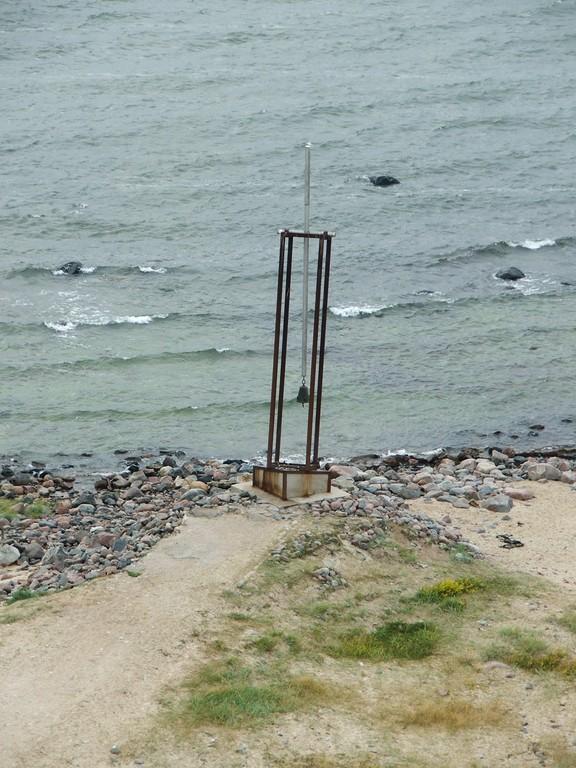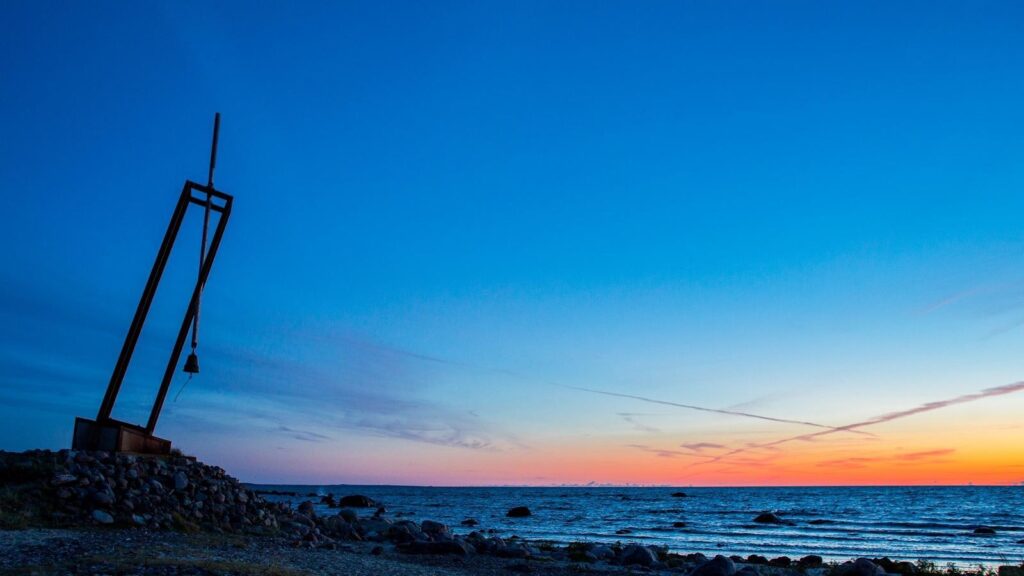The memorial to the victims of the Estonia disaster

Bronze bell – a ship’s or soul bell that starts ringing by itself in a strong wind. With the movement of its cross-shaped pendulum in a storm, it seems a bring a message from the sea – a bell tower in a way … symbolically. The incline of the monument has a visual and emotional impact and should also call to mind the last moments of the ship. Tender details are also added to the bronze bell – four child faces on each of the main points of the compass.
According to official anouncements the front visor of the ship is located about a mile to the west of the wreck. To investigate the reasons for the shipwreck, the visor was lifted to the surface in 1994 and taken to Hanko, Finland. In 1999 the investigative committee gave the visor over to the Swedish Maritime Museum and it was taken to Södertälje port in Sweden. From there the front visor was taken to a Swedish naval base on Muskö island in 2002.
The shipwreck of Estonia was the biggest disaster on the Baltic Sea after the wars. Among the victims of the accident there were people from 70 different nationalities.
According to the official report of the international committee investigating the shipwreck the visor ripped open by the storm dragged with it the ramp attached to it which led to water reaching the car deck.
Estonia was a ferryboat built in 1980 in the Meyer Werft shipyard in Papenburg, Germany. The fromer names of the boat were Viking Sally (1980–1990), Silja Star (1990–1991) and Wasa King. Eesti Merelaevandus and Nordström & Thulin bought the ship for the Tallinn-Stockholm route. Estonia began operating the lane under the Es- tonian flag on Fegruary 2, 1993. The ship was 155.43 m in length and 24.21 in width. Maximum speed of the ship was 21 knots. It had 1190 cabin spaces and fitted 460 cars on the car deck.
On the cape of Tahkuna, land nearest to the crash site, a memorial was put up on the initiative of school teacher Ants Rebane, funded by donations and built in large part as community work done on All Souls’ Day – November 2, 1995. The memorial was dedicated to the children (of whom none survived) perished in the shipwreck, the children left orphans by the disaster and the children that were never born because of it.
The author Mati Karmin has defined the idea of the monument as follows (a selection of the author’s explanation on 10.07.1995)
- Bronze bell – the ship’s or death bell which rings on its own in storm. With its cross-shaped pendulum moving in the storm as if bringing a message from the sea.
- Stainless round pipe cross always seems silver and crisp.
- The iron frame (parallelepiped) rusts (is covered with rust) rather fast and is in essence appropriate to the sea – it would be the natural state of a human product – iron – in sea. Wrecks also rust …
- Granite base, which is tilting towards the shipwreck but also in relation to the shore. The heeling of the monument affects one visual- ly-emotionally and should remind of the perished ship’s last moments.
- The pile of stones surrounding the monument gives people the chance to, besides ringing the bell, bring a stone to the pile and through that communicate with the monument.
- And finally the sacral monument – in a way the bell tower… although symbolic.
- The bronze bell has some subtle details – 4 faces of children in all the 4 cardinal directions…
- In a January storm of 2005 the monument was damaged significantly, when the sea and the storm washed away the filling of the foundation and the stones that covered it. On the initiative of Kõrgessaare parish the surrounding of the foundation was additionally filled and reinforced with concrete.
Gallery
It is a waypoint on the journey
You might also be interested in:





